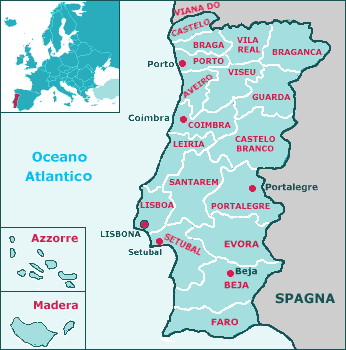Portugal
In short

Administrative Division
The Territory
Cities and places of interest
Porto, the second largest town with a population of over 300000 inhabitants, founded in Roman times as Portus Cali, on the estuary of the Douro river, from which the name Portugal is derived. Fatima, 140km from Lisbon, among the main pilgrimage destinations in Europe, where in May 1917 the Virgin of the Rosary appeared to three young children. Coimbra, a Roman town on the Mondego river and the Portuguese capital until 1245, famous for its university founded in 1290, whose entrance is the "Iron Door" and the Main Hall covered with 15 000 volumes. The professors still wear on official celebrations typical orange head covers and mantles.
The Serra de Arrabida National Park, covering over 10 000 hectares of green forests rich of wildlife, and hosting the largest community of storks in Europe. Inside the park is a 15th century monastery of Capuchin Friars.
The amazing Madeira Islands, with the town of Funchal
The Economy
UNESCO World Heritage Sites


